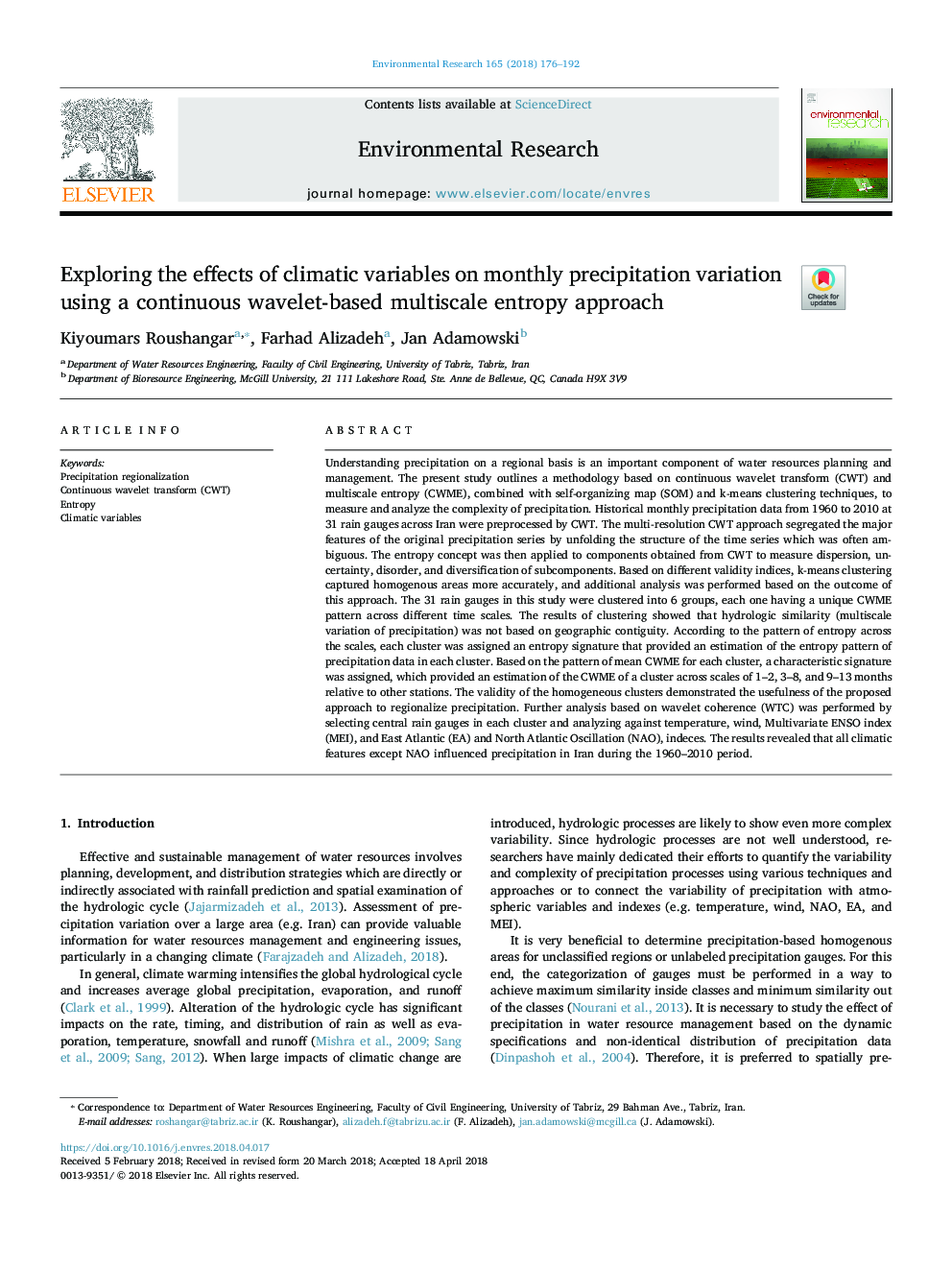| کد مقاله | کد نشریه | سال انتشار | مقاله انگلیسی | نسخه تمام متن |
|---|---|---|---|---|
| 8868858 | 1622538 | 2018 | 17 صفحه PDF | دانلود رایگان |
عنوان انگلیسی مقاله ISI
Exploring the effects of climatic variables on monthly precipitation variation using a continuous wavelet-based multiscale entropy approach
ترجمه فارسی عنوان
بررسی اثرات متغیرهای اقل گرایی بر تغییرات بارش ماهانه با استفاده از رویکرد آنتروپی چند متغیری مبتنی بر موجک پیوسته
دانلود مقاله + سفارش ترجمه
دانلود مقاله ISI انگلیسی
رایگان برای ایرانیان
کلمات کلیدی
موضوعات مرتبط
علوم زیستی و بیوفناوری
علوم محیط زیست
بهداشت، سم شناسی و جهش زایی
چکیده انگلیسی
Understanding precipitation on a regional basis is an important component of water resources planning and management. The present study outlines a methodology based on continuous wavelet transform (CWT) and multiscale entropy (CWME), combined with self-organizing map (SOM) and k-means clustering techniques, to measure and analyze the complexity of precipitation. Historical monthly precipitation data from 1960 to 2010 at 31 rain gauges across Iran were preprocessed by CWT. The multi-resolution CWT approach segregated the major features of the original precipitation series by unfolding the structure of the time series which was often ambiguous. The entropy concept was then applied to components obtained from CWT to measure dispersion, uncertainty, disorder, and diversification of subcomponents. Based on different validity indices, k-means clustering captured homogenous areas more accurately, and additional analysis was performed based on the outcome of this approach. The 31 rain gauges in this study were clustered into 6 groups, each one having a unique CWME pattern across different time scales. The results of clustering showed that hydrologic similarity (multiscale variation of precipitation) was not based on geographic contiguity. According to the pattern of entropy across the scales, each cluster was assigned an entropy signature that provided an estimation of the entropy pattern of precipitation data in each cluster. Based on the pattern of mean CWME for each cluster, a characteristic signature was assigned, which provided an estimation of the CWME of a cluster across scales of 1-2, 3-8, and 9-13 months relative to other stations. The validity of the homogeneous clusters demonstrated the usefulness of the proposed approach to regionalize precipitation. Further analysis based on wavelet coherence (WTC) was performed by selecting central rain gauges in each cluster and analyzing against temperature, wind, Multivariate ENSO index (MEI), and East Atlantic (EA) and North Atlantic Oscillation (NAO), indeces. The results revealed that all climatic features except NAO influenced precipitation in Iran during the 1960-2010 period.
ناشر
Database: Elsevier - ScienceDirect (ساینس دایرکت)
Journal: Environmental Research - Volume 165, August 2018, Pages 176-192
Journal: Environmental Research - Volume 165, August 2018, Pages 176-192
نویسندگان
Kiyoumars Roushangar, Farhad Alizadeh, Jan Adamowski,
